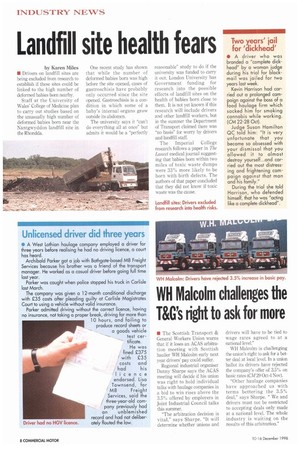Landfill site health fears
Page 10

If you've noticed an error in this article please click here to report it so we can fix it.
by Karen Miles • Drivers on landfill sites are being excluded from research to establish if these sites could be linked to the high number of deformed babies born nearby.
Staff at the University of Wales' College of Medicine plan to carry out studies based on the unusually high number of deformed babies born near the Nantgwyddon landfill site in the Rhondda. One recent study has shown that while the number of deformed babies born was high before the site opened, cases of gastroschisis have probably only occurred since the site opened. Gastroschisis is a condition in which some of a baby's internal organs grow outside its abdomen.
The university says it "can't do everything all at once" but admits it would be a "perfectly
reasonable'. study to do if the university was funded to carry it out. London University has Government funding for research into the possible effects of landfill sites on the health of babies born close to them. It is not yet known if this research will include drivers and other landfill workers, but in the summer the Department of Transport claimed there was "no basis" for worry by drivers and landfill staff.
The Imperial College research follows a paper in The Lancet medical journal suggesting that babies born within two miles of toxic waste dumps were 33% more likely to be born with birth defects. The authors of that paper concluded that they did not know if toxic waste was the cause.












































































































